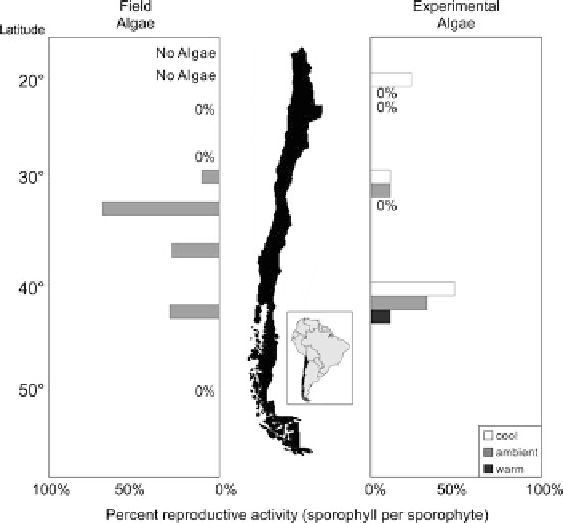Biology Reference
In-Depth Information
Fig. 17.7
Percent reproductively active sporophytes of freely floating
M. pyrifera
and in outdoor
mesocosm experiments simulating the temperature gradient (ambient, cool, warm) along the
Chilean Pacific coast. Figures modified after Macaya et al. (
2005
) and Roth
€
ausler et al. (
2009
),
respectively
temperatures between 18
C and 30
C (Hanisak and Samuel
1987
). These algae,
commonly known as gulfweed, appear to have evolved efficient protection
mechanisms to endure surface levels of high temperature and irradiance (Schofield
et al.
1998
for
S. natans
), which is in accordance with their distributional ranges in
the tropical and subtropical N Atlantic. No growth was revealed for both species at
water temperatures around 12
C (Hanisak and Samuel
1987
).
17.3.3 Herbivory
Floating seaweeds are commonly inhabited by dense populations of mobile
mesoherbivores such as amphipods and isopods, which can affect algal persistence
by removing photosynthetic tissue and thereby weakening the ability to fix carbon
(Gutow
2003
; Thiel and Gutow
2005b
; Vandendriessche et al.
2007a
; Roth
ausler
et al.
2009
). These grazers mainly feed on vegetative blades and it was shown for
floating individuals of
M. pyrifera
in an outdoor mesocosm study that high densities
of a herbivorous amphipod led to a reduction in pigment contents (e.g., by the
€

